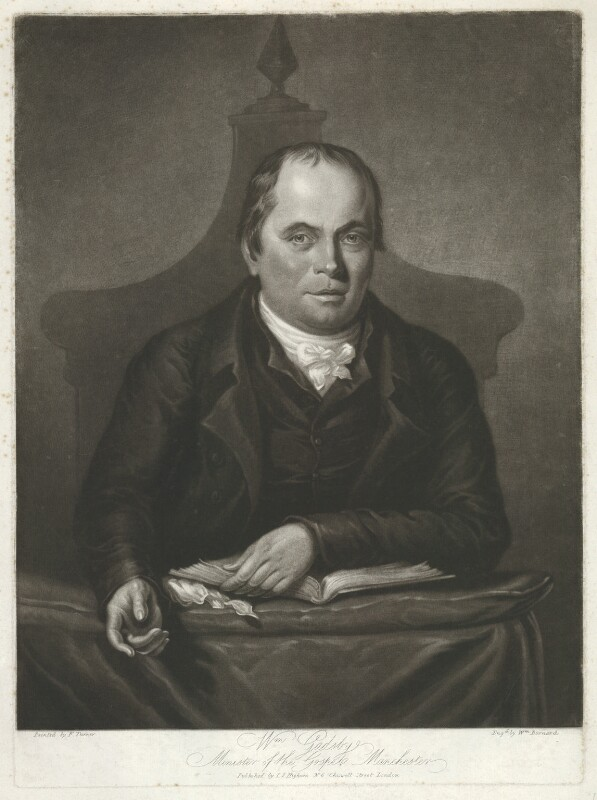While I am a conviction Reformed Baptist, I knew very little of William Gadsby and the Gospel Standard churches. Gadsby's story is that he grew up in the midlands in extreme poverty and with very little education. He was first converted in late adolescence (17), and later baptised on profession of faith at age 20. He ministered first in the midlands before taking up the role of pastor of what became Rochdale Road Strict and Particular Baptist Chapel in Manchester (picture below), where he was pastor from 1805 until 1844 (39 years). By all accounts, notwithstanding the circumstances of his own earlier life, and also certain personal idiosyncracies, William Gadsby's ministry was attended by great blessing. His congregation grew from 100 to 1000 members during the course of his ministry, and he is reputed to have planted 40 churches across the country.
Two of Gadsby's closest associates were John Warburton (1776-1857) and John Kershaw (1792-1870). John Warburton was born in Whitefield (near Bury), and served as pastor of Hope Street Baptist Chapel in Rochdale 1810-1815 before serving as pastor of Zion Strict Baptist Church at Trowbridge for 1815-1857 (42 years). His autobiography is entitled, "Mercies of a Covenant God." John Kershaw, a native of Rochdale, was the pastor of the same Hope Street Baptist Chapel which released about a dozen members in 1835 to form what became Providence Strict and Particular Baptist Chapel, Bury (now known as Radcliffe Road Baptist Church, Bury).
William Gadsby preached, organised churches, cared for souls, advocated for the poor and wrote hymns. When he broke his leg at home in his garden, the Manchester Times reported the incident with much concern for his welfare. When he died in 1844 the funeral cortege number over 30 vehicles.
For all his clear gifts and virtues, William Gadsby was also, regrettably, what is known as a Hyper-Calvinist. This term refers to the mistaken belief that the call to repent and believe should not be addressed to unbelievers, since we are not sure whether or not they are of the elect. Rather the gospel should be preached, and it is God who will work repentance and faith in those who hear it. In Gadsby's case these numbered in the hundreds, if not thousands.
It is instructive to think about what it means for us to be spirituals heir of someone as great, but also as ambiguous as William Gadsby. Surely this is the case with any parentage - we honour and respect but do not necessarily share every conviction of our parents. And likewise our children hopefully learn and benefit in many ways from us, but hopefully do not repeat our mistakes and sins, and do not follow our every way as clones and robots. And that's okay. But this should never lead us to dismiss our parents - spiritual or earthly.
William Gadsby's reputed last words were the following exclamation: "Free Grace! Free Grace! Free Grace!"
My thanks go to Oliver Allmand-Smith for his enlightening and enthusiastic talk at the 2017 Grace Baptist Assembly on the subject of William Gadsby.


Comments
Post a Comment